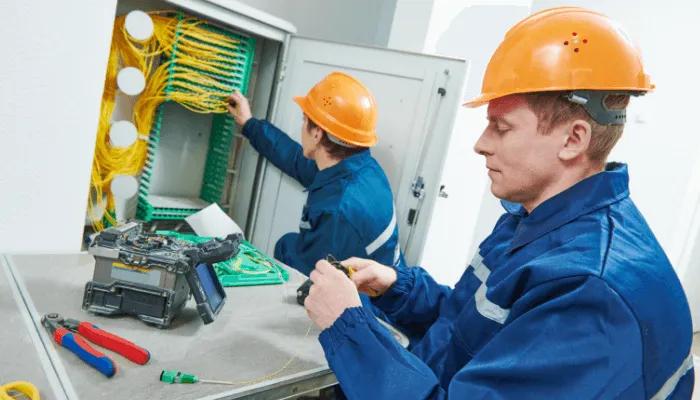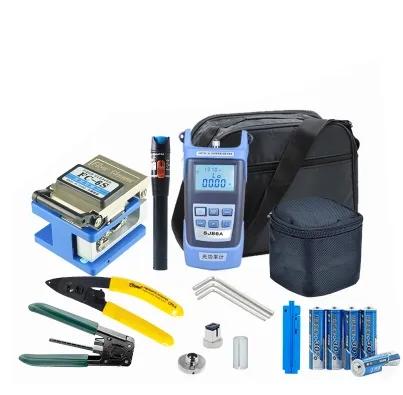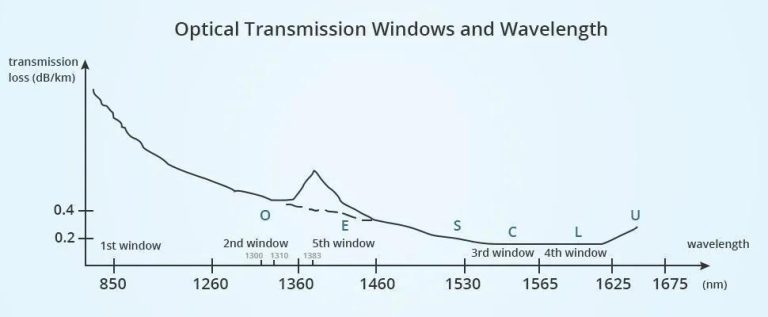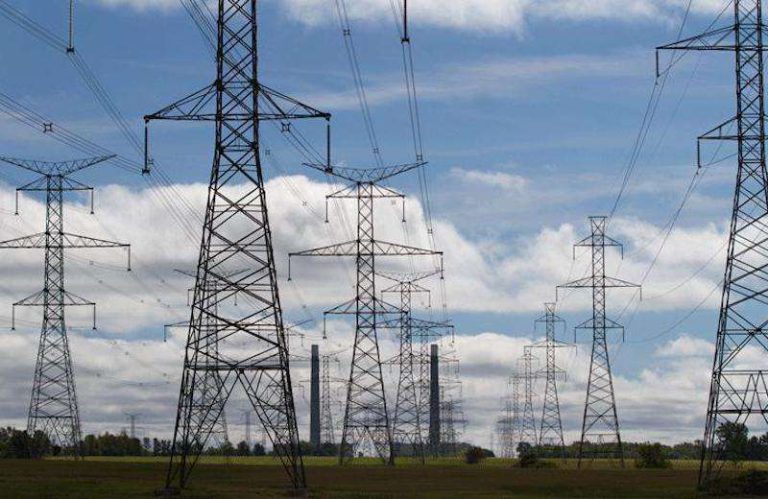10 Tips for Simplifying the Installation of Optical Fiber Cables
Installing optical fiber cables can be a complex and time-consuming task. It is crucial to have a well-planned and executed installation process to ensure that the fiber optic cable is properly installed and functioning as intended. The installation process involves various steps, from planning and preparation to installation and testing. In this blog, we will be discussing 10 tips for simplifying the installation of optical fiber cables. These tips will cover everything from planning and preparation to the actual installation and will help ensure that your fiber optic cable installation is a success.

- 1 Plan ahead
- 2 Choose the right cable
- 3 Use the right tools
- 4 Protect the cable
- 5 Test the cable
- 6 Be mindful of underground installation
- 7 Use proper splicing techniques
- 8 Use the right connectors
- 9 Follow safety guidelines
- 10 Hire professionals
- 11 Conclusion
- 12 FAQs
Plan ahead
Before beginning any fiber optic cable installation, planning and preparing properly is important. This includes mapping out the cable’s route, identifying potential obstacles, and obtaining necessary permits or approvals. It is also important to consider factors such as the type of cable, connectors, and equipment needed for the installation. Having a well-thought-out plan will ensure that the installation process runs smoothly and that potential issues are identified and addressed before they occur. It’s also crucial to conduct a site survey to ensure that there is enough space to install the cable and to check for any underground utilities or other potential hazards. Furthermore, ensure that you have a detailed test plan to test the cable after installation and make sure the system is working as expected. Proper planning and preparation can save time, money, and potential headaches in the long run.
Choose the right cable
Fiber optic cables are an essential component in modern telecommunications infrastructure. However, it is important to note that not all fiber optic cables are the same. Different cables have different properties and are designed for specific use cases. When choosing a cable for a particular application, it is important to consider the environment in which it will be installed.
For example, if the cable is going to be installed outdoors, it is important to choose a cable that is rated for outdoor use. This type of cable will typically have a ruggedized jacket that can withstand extreme temperatures, humidity, and other weather conditions. It will also be resistant to damage from factors such as UV radiation, water, and chemical exposure.
It is also important to consider the cable’s temperature rating. It will be exposed to different temperature ranges, such as in cold or hot environments. Cables designed for extreme temperatures will have a higher temperature rating than cables designed for indoor use.
Furthermore, the humidity rating of the cable must also be considered. Fibers in high-humidity environments are exposed to water vapor which can cause damage to the fibers. So, it is important to choose a cable with a high humidity rating if it will be installed in a high-humidity environment.
Use the right tools

Having the right tools on hand is essential for a successful fiber optic cable installation. This includes things like fiber optic cable cutters, strippers, and cleavers, as well as any other specialized tools that may be required. Using the right tools will make the installation process easier and ensure that the cable is properly prepared and connected. It is also important to use high-quality tools to ensure that the installation is done correctly and efficiently. Poor quality tools can damage the fiber optic cable, resulting in poor performance and signal loss. Using the right tools can also help reduce the risk of injury during the installation process. Furthermore, it’s also important to use the right tools for the specific type of fiber optic cable being installed, as different types of fiber may require different tools or procedures. Overall, using the right tools and using them properly is an essential aspect of a successful fiber optic cable installation.
Protect the cable
It is important to protect the fiber optic cable during the installation process. This includes using protective sleeves or conduits to protect the cable from damage and not bending or kinking the cable. A damaged cable can cause significant issues, such as signal loss or complete failure of the system.
Test the cable
Before and after installation, it is important to test the cable to ensure that it is functioning properly. This includes testing for continuity and signal strength, as well as any other tests that may be required. Regular cable testing can help identify any issues early on, allowing for quick and efficient resolution.
Be mindful of underground installation
Underground fiber optic cable installation presents its own set of challenges. This includes things like identifying the location of buried utilities and taking care not to damage them during installation. It is also important to consider the type of conduit or protective covering needed for underground installation to protect the cable from damage and the elements.
Use proper splicing techniques
Splicing is a critical step in the fiber optic cable installation process. It is important to use proper splicing techniques, such as fusion splicing, to ensure a secure and reliable connection. Improper splicing can result in signal loss and weak connections, leading to system failure. Fusion splicing is considered to be one of the most accurate and reliable methods of splicing fiber optic cables. The process involves using heat to fuse or melt the ends of two fibers together, creating a permanent connection. This method ensures a low-loss and high-quality splice, resulting in minimal signal loss and a secure connection. Additionally, using proper cleaving techniques, such as precision cleaving, prior to splicing can also greatly improve the quality of the splice. It is also important to use the proper equipment, such as fusion splicers and cleavers and to have a well-trained operator to ensure that the splicing process is done correctly. In summary, proper splicing techniques, equipment and a well-trained operator are crucial for secure and reliable connection in the fiber optic cable installation process.
Use the right connectors
Choosing the right connectors is essential for a successful fiber optic cable installation. Not only is it important to ensure that the connectors are compatible with the cable and equipment being used, but it is also crucial to select connectors that have low insertion loss and back reflection. Using incompatible connectors can lead to signal loss, system failure, and decreased overall network performance. Researching and investing in high-quality connectors is important to ensure a reliable and efficient fiber optic cable installation. Additionally, proper installation and testing of the connectors is also crucial in maintaining a successful fiber optic cable system.
Follow safety guidelines
Safety should always be a top priority when installing fiber optic cables. This includes things like proper grounding and bonding and taking care to avoid contact with live electrical circuits. It is also important to follow any OSHA regulations and guidelines to ensure the safety of both the installers and any individuals who may come into contact with the cable in the future.
Hire professionals
If you are not experienced in fiber optic cable installation, it may be best to hire professionals to handle the task. Not only will they have the knowledge and expertise to get the job done correctly, but they will also be able to handle any unforeseen issues that may arise. In addition, hiring professionals can save time and resources in the long run, as they will have the necessary tools, equipment, and expertise to complete the installation quickly and efficiently.
Conclusion
In conclusion, installing optical fiber cables can be complex and time-consuming, but following these 10 tips can simplify the process and make it more efficient. Proper planning and preparation, choosing the right cable, using the right tools, protecting the cable, regular testing, being mindful of underground installation, proper splicing techniques, choosing the right connectors, following safety guidelines, and hiring professionals when necessary, will ensure that your fiber optic cable installation is a success. Remember that a well-executed installation process is crucial to ensure that the fiber optic cable is properly installed and functioning as intended.
FAQs
Q. What must one consider when choosing a fiber optic cable?
A: When choosing a fiber optic cable, it is important to consider the environment in which it will be installed, such as if it will be installed outdoors or in extreme temperatures. It is important to choose a cable that is rated for outdoor use or has a high-temperature rating if it will be exposed to extreme temperatures. Additionally, the humidity rating of the cable must also be considered, as fibers in high-humidity environments are exposed to water vapor which can cause damage to the fibers.
Q. Why is proper planning and preparation so important before installing fiber optic cables?
A: Proper planning and preparation before installing fiber optic cables are crucial to ensure that the fiber optic cable is properly installed and functioning as intended. This includes mapping out the cable’s route, identifying potential obstacles, and obtaining necessary permits or approvals. It is also important to consider factors such as the type of cable, connectors, and equipment needed for the installation. Having a well-thought-out plan will ensure that the installation process runs smoothly and that potential issues are identified and addressed before they occur. Proper planning can also help to reduce the risk of damage which can lead to costly repairs or even complete replacement.
Q. How does using the right tools help during the installation process?
A: Using the right tools during installation is essential for a successful fiber optic cable installation. This includes things like fiber optic cable cutters, strippers, and cleavers, as well as any other specialized tools that may be required. Using the right tools will make the installation process easier and ensure that the cable is properly prepared and connected. Additionally, using the right tools can help to reduce the risk of injury during the installation process.
Q. How can proper splicing techniques ensure a secure and reliable connection in fiber optic cable installation?
A: The splicing process is a vital component in fiber optic cable installation as it connects two separate fibers. If done incorrectly, splicing can result in signal loss and weak connections leading to system failure. One of the most effective and reliable splicing techniques is fusion splicing, which uses heat to fuse or melt the ends of two fibers together to create a permanent connection. This method guarantees a high-quality splice with minimal signal loss, resulting in a secure and reliable connection. To ensure the best results, it is important to use proper cleaving techniques and equipment, such as fusion splicers and cleavers, and have a well-trained operator to perform the splicing process.
Q. Why is it important to choose the right connectors?
A: Choosing the right connectors is crucial for a successful fiber optic cable installation as it ensures compatibility with the cable and equipment being used and low insertion loss and back reflection. Using incompatible connectors can lead to signal loss, system failure, and decreased overall network performance. Researching and investing in high-quality connectors is important to ensure a reliable and efficient fiber optic cable installation. Additionally, proper installation and testing of the connectors is also crucial in maintaining a successful fiber optic cable system.


